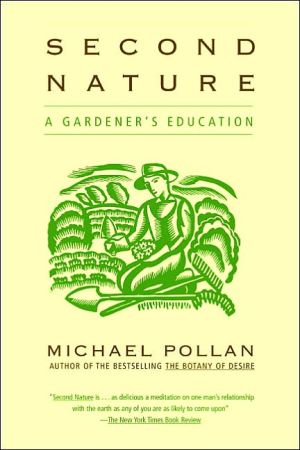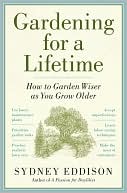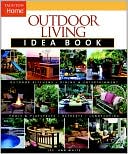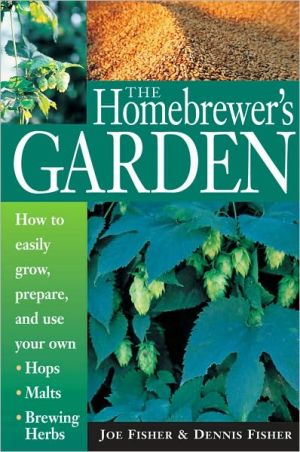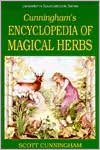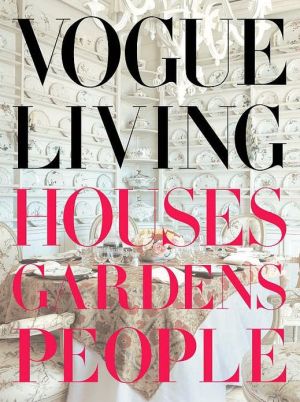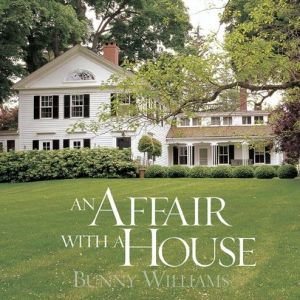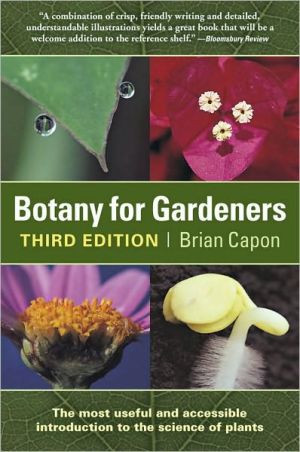Second Nature: A Gardener's Education
Eight years ago, Harper's Magazine editor Michael Pollan bought an old Connecticut dairy farm. He planted a garden and attempted to follow Thoreau's example: do not impose your will upon the wilderness, the woodchucks, or the weeds. That ethic did not, of course, work. But neither did pesticides or firebombing the woodchuck burrow. So Michael Pollan began to think about the troubled borders between nature and contemporary life.\ \ The result is a funny, profound, and beautifully written book...
Search in google:
Chosen by the American Horticultural Society as one of the seventy-five greatest books ever written about gardening, Second Nature has become a manifesto for rethinking our relationship with nature. With chapter ranging from a reconsideration of the Great American Lawn and a dispatch from one man’s war with a woodchuck to reflections on the sexual politics of roses, Pollan captures the rhythms of our everyday engagement with the outdoors in all its glory and exasperation. Publishers Weekly Despite some overheated prose, Pollan's 2003 book on his many years gardening proves to be an enjoyable and instructive listen. The account moves seamlessly from the humble and personal—the minor and major decisions Pollan must make for his garden each season—to a larger inquiry of gardening through historical, philosophical, environmental, and practical lenses. Pollan's soft and slightly nasal voice is rhythmic and engaging, but Scott Brick, who narrated The Omnivore's Dilemma and In Defense of Food, would have been a better choice. Pollan can't match Brick's ability to marshal information and move an audience, and this one consequently lacks the impact and nuance of his previous audiobooks. A Grove Press paperback. (Mar.)
Introduction\ This book is the story of my education in the garden. The garden in question is actually two, one more or less imaginary, the other insistently real. The first is the garden of books and memories, that dreamed-of outdoor utopia, gnat-free and ever in bloom, where nature answers to our wishes and we imagine feeling perfectly at home. The second garden is an actual place, consisting of the five acres of rocky, intractable hillside in the town of Cornwall, Connecticut, that I have been struggling to cultivate for the past seven years. Much separates these two gardens, though every year I bring them a little more closely into alignment.\ Both of these gardens have had a lot to teach me, and not only, as it turned out, about gardening. For I soon came to the realization that I would not learn to garden very well before I'd also learned about a few other things: about my proper place in nature (was I within my rights to murder the woodchuck that had been sacking my vegetable garden all spring?); about the somewhat peculiar attitudes toward the land that an American is born with (why is it the neighbors have taken such a keen interest in the state of my lawn?); about the troubled borders between nature and culture; and about the experience of place, the moral implications of landscape design, and several other questions that the wish to harvest a few decent tomatoes had not prepared me for. It may be my nature to complicate matters unduly, to search for large meanings in small things, but it did seem that there was a lot more going on in the garden than I'd expected to find.\ I began gardening for the same reasons people usually do: for the satisfaction of pulling bunches of carrots from one's own ground; the desire to make a patch of land more hospitable or productive; the urge to recover a place remembered from childhood, and the basic need to keep the forest from swallowing up one's house. When my wife and I bought our first place in 1983--a sliver of a derelict dairy farm on the eastern edge of the Housatonic Valley--we had been living in Manhattan for some time, in an apartment that receives approximately ninety minutes of sunlight a day, and the prospect of growing a few flowers and vegetables seemed exotic. There was also the matter of the advancing forest, which did in fact threaten to engulf our house, a little cape that had been assembled from a Sears, Roebuck kit in 1929. I had to do something--either mow the weed patch that passed for a lawn, or put in a real garden-if I hoped to keep the woods at bay.\ So I guess you could say the forest made me do it. But there was also, mixed in with my motives, the recollected satisfactions of childhood gardens. Growing up on Long Island in the early 1960s, I'd cared for a succession of pocket gardens in various corners of my parents' suburban plot, and had spent many Saturdays helping out my grandfather in the much grander garden he tended a few miles away (Chapter 1 is a reminiscence of these places). Now I had some ground of my own, and gardening it seemed a natural way to spend my weekends, something I might even have a knack for.\ Judith had other ideas. Though her position would eventually soften, she started out a sworn enemy of gardening, having been forced as a child to do yard work. I think she was also less troubled by the derelict parts of our property than I was, finding beauty in the march of brush across an abandoned hay field, or the rank, top-heavy growth of an apple tree in need of hard pruning. So she began making landscape paintings and I, with somewhat less striking results, began making landscapes.\ *\ • *\ It wasn't very long before I discovered I was ill-prepared for the work I'd taken on. The local New England landscape--a patchwork of abandoned farms swiftly being overtaken by second-growth forest--proved far less amenable to my plans for it than the tame suburban plots of my childhood had. Here were large and rapacious animals, hegemonies of weeds, a few billion examples of every insect in the field guide, killing frosts in June and September, and boulders of inconceivable weight and number. But there were obstacles of a very different kind that proved just as vexing: the unexamined attitudes toward nature that I'd brought with me to the garden.\ Like most Americans out-of-doors, I was a child of Thoreau. But the ways of seeing nature I'd inherited from him, and the whole tradition of nature writing he inspired, seemed not to fit my experiences. In confronting the local woodchucks, or deciding whether I was obliged to mow my lawn, or how liberal I could afford to be with respect to weeds, I was deep in nature, surely, but my feelings about it, although strong, were something other than romantic, or worshipful. When one summer I came across Emerson's argument that "weeds" (just then strangling my annuals) were nothing more than a defect of my perception, I felt a certain cognitive dissonance. Everybody wrote about how to be in nature, what sorts of perceptions to have, but nobody about how to act there. Yet the gardener, unlike the naturalist, has to, indeed wants to, act.\ Now it is true that there are countless volumes of practical advice available to the perplexed gardener, but I felt the need for some philosophical guidance as well. Before I firebomb a woodchuck burrow, I like to have a bit of theory under my belt. Yet for the most part, Americans who write about nature don't write about the garden--about man-made landscapes and the processes of their making. This is an odd omission, for although gardening may not at first seem to hold the drama or grandeur of, say, climbing mountains, it is gardening that gives most of us our most direct and intimate experience of nature--of its satisfactions, fragility, and power.\ Yet traditionally, when we have wanted to think about our relationship to nature, we have gone to the wilderness, to places untouched by man. Thoreau, in fact, was the last important American writer on nature to have anything to say about gardening. He planted a bean field at Walden and devoted a chapter to his experiences in it. But the bean field (which I talk about in my chapter on weeds) got Thoreau into all sorts of trouble. His romance of wild nature left him feeling guilty about discriminating against weeds (he rails against the need for such "invidious distinctions") and he couldn't see why he was any more entitled to the harvest of his garden than the resident woodchucks and birds. Badly tangled up in contradictions between his needs and nature's prerogatives, Thoreau had to forsake the bean field, eventually declaring that he would prefer the most dismal swamp to any garden. With that declaration, the garden was essentially banished from American writing on nature.\ I think this is unfortunate, and not just because I happen to stand in need of sound advice in the garden. Americans have a deeply ingrained habit of seeing nature and culture as irreconcilably opposed; we automatically assume that whenever one gains, the other must lose. Forced to choose, we usually opt for nature (at least in our books). This choice, which I believe is a false one, is what led Thoreau and his descendants out of the garden. To be sure, there is much to be learned in the wilderness; our unsurpassed tradition of nature writing is sufficient proof of that. But my experience in the garden leads me to believe that there are many important things about our relationship to nature that cannot be learned in the wild. For one thing, we need, and now more than ever, to learn how to use nature without damaging it. That probably can't be done as long as we continue to think of nature and culture simply as antagonists. So how do we begin to find some middle ground between the two? To provide for our needs and desires without diminishing nature? The premise of this book is that the place to look for some of the answers to these questions may not be in the woods, but in the garden.\ *\ • *\ Though this book is not a polemic, it is full of argument: between me and this vexing piece of land, and also between me and some of the traditional ways of looking at nature in America; I find I spend a lot of time arguing with Thoreau. Many of these arguments don't get settled; this book is an exercise in discovery rather than truth telling. It is, as I say, the story of an education, and, as will be clear from the high incidence of folly in these pages, I remain more pupil than teacher. I know more at the end of my narrative than I did at the beginning, and for the most part I have followed the logic of my experiences, as they unfolded season by season, rather than that of any thesis. Even so, there is, I think, threading through this book (and spelled out in some detail in Chapter 10), a single underlying argument: that the idea of a garden--as a place, both real and metaphorical, where nature and culture can be wedded in a way that can benefit both--may be as useful to us today as the idea of wilderness has been in the past. This might strike readers as a rather unfashionably optimistic notion. In fact I share the general sense of alarm about our environment; I do not, however, share the gathering sense of despair. I find, in the garden, some grounds for hope.\ What are my qualifications to write such a book? Certainly I am no expert--not on gardening, or nature, or much of anything else, for that matter. This is very much the enterprise of an amateur. My sole qualification (if it may be called that) is the wager I decided to make at the beginning of this project: that gardening might be worth taking seriously, and that, closely attended to, it might yield some good stories and helpful ideas. Yet I suspect that once I began to garden, this book was probably inevitable. As most gardeners will testify, the desire to make a garden is often followed by a desire to write down your experiences there--in a notebook, or a letter to a friend who gardens, or if, like me, you make your living by words, in a book. Writing and gardening, these two ways of rendering the world in rows, have a great deal in common. In my part of the country, there comes each year one long and occasionally fruitful season when gardening takes place strictly on paper and in the imagination. This book is how I've spent the last few such seasons in my garden.
\ Publishers Weekly - Publisher's Weekly\ This isn't so much a how-to on gardening as a how-to on thinking about gardening. It follows the course of the natural year, from spring through winter, as Pollard, an editor at Harper's , chronicles his growth as a gardener in Connecticut's rocky Housatonic Valley. Starting out as a ``child of Thoreau,'' Pollard soon realized that society's concept of culture as the enemy of nature would get him a bumper crop of weeds and well-fed woodchucks but no vegetables to eat. Far more serviceable materially and philosophically, he now finds, is the metaphor of a garden, where nature and culture form a harmonious whole. Pollard finds ample time for musing on how his own tasks fit in with the overall scheme of existence; thus, there are chapters titled ``Compost and Its Moral Imperatives'' and ``The Idea of a Garden.'' Although serious in import, the writing is never ponderous; Pollard's wit flashes throughout, and particularly in anecdotes about his youth: one memorable incident has his father mowing his initials in the front yard after being reproached by a suburban neighbor about his overgrown lawn. (May)\ \ \ \ \ Library JournalPollan, executive editor of Harper's and self-proclaimed amateur gardener, has written a book that is by turns charming and annoying, insightful and shallow, droll and banal. His collection of a dozen essays arranged by season is based on his experiences over a seven-year period in his Connecticut garden, along with vignettes from garden history. Unfortunately, Pollan's text is characterized by dubious and unsupported generalities, self-conscious humor, and extended, labored metaphors, and his lack of gardening authority dooms the book to superficiality. Experienced gardeners and devotees of garden literature will find little here that is original. Only for comprehensive gardening collections.-- Richard Shotwell, Hancock Shaker Village, Pittsfield, Mass.\ \ \ Publishers WeeklyDespite some overheated prose, Pollan's 2003 book on his many years gardening proves to be an enjoyable and instructive listen. The account moves seamlessly from the humble and personal—the minor and major decisions Pollan must make for his garden each season—to a larger inquiry of gardening through historical, philosophical, environmental, and practical lenses. Pollan's soft and slightly nasal voice is rhythmic and engaging, but Scott Brick, who narrated The Omnivore's Dilemma and In Defense of Food, would have been a better choice. Pollan can't match Brick's ability to marshal information and move an audience, and this one consequently lacks the impact and nuance of his previous audiobooks. A Grove Press paperback. (Mar.)\ \ \ \ \ Library JournalPublished in 1991 and newly available on audio, this is the first of six books journalist/activist Pollan (www.michaelpollan.com) has published to date. (His latest title, Food Rules: An Eater's Manual, is currently available only in ebook and print paperback formats.) The work comprises a dozen engaging essays—arranged by season and including vignettes from garden history—based on Pollan's experiences tending his own Connecticut garden. Although some of the essays, like the one on planting trees, can be vapid and lofty, the majority offer entertaining musings on a variety of topics, from compost to mowing to gardening catalogs. Pollan himself narrates, in a smooth voice and at a leisurely pace. Recommended for fans of the author's, gardeners, nature enthusiasts, and philosophers. [The Dell pb was recommended "for comprehensive gardening collections," LJ 3/15/91.—Ed.]—Phillip Oliver, Univ. of North Alabama Lib., Florence\ \
